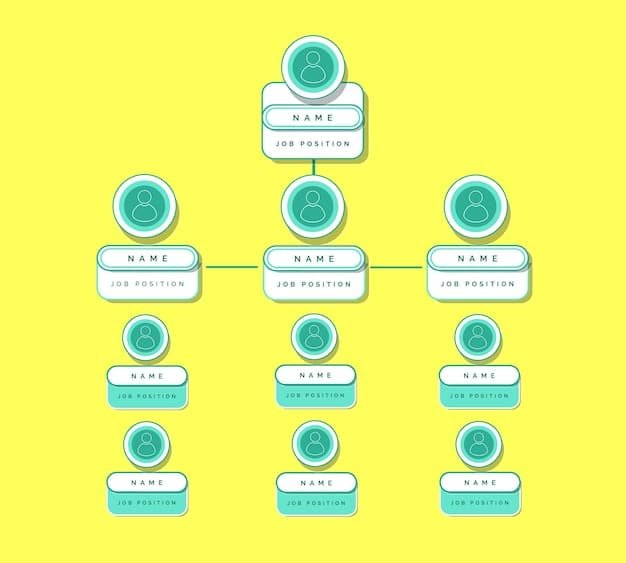Ethereum 2.0 Staking: Maximize Rewards After the Merge

Ethereum 2.0 staking rewards offer a way to earn passive income by participating in the network’s validation process after the Merge, but understanding the nuances of staking can help maximize your returns while minimizing risks.
Interested in maximizing your Ethereum 2.0 staking rewards after the Merge? Staking is a crucial part of the Ethereum ecosystem, and understanding it can boost your cryptocurrency portfolio. Let’s dive into how you can optimize your returns.
Understanding Ethereum 2.0 Staking
Ethereum’s transition to a proof-of-stake (PoS) consensus mechanism, known as Ethereum 2.0 or “the Merge,” has made staking a central function for network operation and governance. Staking involves locking up a certain amount of ETH to validate transactions and secure the network.
By participating in staking, users can earn rewards for their role in maintaining the network’s integrity. The amount of rewards earned depends on several factors, including the amount of ETH staked and the overall network activity. Let’s explore how staking works in detail.
How Ethereum Staking Works
Ethereum staking is a process where individuals or entities lock up their ETH holdings in a smart contract to support the Ethereum network. This process is essential for validating transactions and ensuring network security under the PoS consensus mechanism.
Stakers, also known as validators, are responsible for proposing and attesting to new blocks on the blockchain. For their services, validators receive rewards in the form of newly minted ETH and transaction fees. Let’s break down the key components.
Key Components of Staking
To become a validator, you must stake a minimum of 32 ETH. This requirement ensures that validators have a vested interest in the network’s success. There are various methods for staking, each with its own set of requirements and rewards.
- Solo Staking: Running your own validator node requires technical expertise but offers the highest rewards.
- Staking Pools: Joining a staking pool allows you to stake smaller amounts of ETH and share rewards proportionally.
- Centralized Exchanges: Some exchanges offer staking services, making it easy to stake your ETH without technical knowledge.

Ethereum staking is a critical component of the network’s PoS consensus mechanism, offering users a way to earn rewards while contributing to network security. Understanding the different staking methods and their requirements is essential for maximizing returns.
Factors Affecting Ethereum 2.0 Staking Rewards
Several factors influence the rewards you can earn from Ethereum 2.0 staking. Understanding these factors can help you make informed decisions and optimize your staking strategy for maximum returns.
The annual percentage yield (APY) for staking ETH can vary significantly depending on network conditions and participation rates. Let’s delve into the key factors.
The APY for staking ETH is not fixed; it fluctuates based on several dynamic factors. Understanding these factors is essential for anyone looking to maximize their staking rewards.
One of the primary factors that impacts staking rewards is the total amount of ETH staked on the network. The relationship is generally inverse: as more ETH is staked, the rewards per validator tend to decrease. This is because the fixed amount of rewards is distributed among a larger pool of validators.
Network Participation
The overall health and participation rate of the Ethereum network can also affect staking rewards. If the network experiences high congestion or instability, rewards may be reduced to incentivize validators to maintain network integrity. Conversely, a stable and active network can lead to higher rewards.
Validator Efficiency
Validator efficiency also plays a crucial role. Validators that consistently propose and attest to blocks correctly and promptly are more likely to receive higher rewards. Factors that impact efficiency include uptime, hardware performance, and software configuration. Ensuring your validator node is running smoothly is critical for maximizing rewards.
- Uptime: Maintaining high uptime ensures you don’t miss out on reward opportunities.
- Hardware: Using reliable hardware minimizes downtime and improves performance.
- Software: Keeping your validator software up to date ensures compatibility and security.
Ultimately, staking rewards are influenced by a complex interplay of network-wide factors and individual validator performance. Monitoring these dynamics can help you optimize your staking strategy to achieve the best possible returns.
Choosing the Right Staking Method
Selecting the right staking method is crucial for maximizing your Ethereum 2.0 staking rewards. There are several options available, each with its own benefits and drawbacks.
The suitable staking method largely depends on your technical expertise, the amount of ETH you want to stake, and your risk tolerance. Let’s evaluate the various staking options to help you make an informed decision.
One of the most critical choices in staking is whether to run your own validator node or join a staking pool. Each approach has its own set of advantages and challenges. Let’s compare the options.
Solo Staking
Solo staking involves running your own validator node. This method requires you to hold at least 32 ETH and possess a strong technical understanding of blockchain technology. The rewards for solo staking are generally higher because you receive the full payout without sharing with others.
However, solo staking also comes with significant responsibilities. You need to ensure your validator node is always online, properly configured, and protected from security threats. Moreover, you are responsible for keeping your software updated and compliant with Ethereum network upgrades.
Staking Pools
Staking pools allow you to stake smaller amounts of ETH and share rewards proportionally with other participants. This method requires less technical knowledge and provides a more accessible way to participate in staking. Staking pools are often run by third-party providers who handle the technical aspects of running validator nodes.

Ultimately, the best staking method depends on your individual circumstances and preferences. Carefully consider the pros and cons of each method before making a decision to ensure it fits with your resources and risk tolerance.
Risks and Considerations in Ethereum Staking
While Ethereum staking offers attractive rewards, it’s essential to be aware of potential risks and considerations. Understanding these factors can help you make informed decisions and mitigate potential losses.
Staking involves locking up your ETH for an extended period, and several factors can impact your rewards and the safety of your investment. Let’s explore the main risks involved.
One of the most significant risks is validator downtime. If your validator node goes offline, you could face penalties, reducing your potential rewards. Downtime can occur for various reasons, including hardware failures, software issues, or network disruptions.
Slashing
Slashing is another potential risk. It occurs when a validator acts maliciously or violates the network’s consensus rules. Slashing can result in a significant loss of staked ETH.
Examples of slashing include attempting to double-vote on a block or attesting to conflicting information. It’s crucial to ensure your validator node is properly configured and compliant with network rules to avoid slashing.
Lockup Periods
Staked ETH is subject to lockup periods, which can vary depending on the staking method. During these periods, you cannot access your ETH, even if you need it for other purposes. It’s important to understand the lockup period before staking your ETH.
- Withdrawal Queues: Unstaking ETH can involve waiting in a withdrawal queue, especially during periods of high network activity.
- Market Volatility: The value of ETH can fluctuate significantly during the lockup period, impacting the overall value of your staking rewards.
Awareness and risk management are critical components of a successful staking strategy. Taking steps to mitigate potential losses will ensure a more secure and rewarding staking experience.
Strategies for Maximizing Staking Rewards
Maximizing your Ethereum 2.0 staking rewards requires a strategic approach. Several strategies can help you increase your returns while managing risks.
A proactive approach involves continuous monitoring and optimization of your staking setup. Let’s look at some effective strategies to maximize your rewards.
Optimizing your validator’s performance is essential for maximizing rewards. This includes ensuring high uptime, using reliable hardware, and staying up-to-date with the latest software updates.
Maintain High Uptime
High uptime ensures your validator consistently participates in block validation and attestation, maximizing your chances of receiving rewards. This involves maintaining a stable internet connection and reliable hardware.
Investing in a UPS (Uninterruptible Power Supply) can help prevent downtime during power outages. Regularly monitoring your validator’s performance and addressing any issues promptly can also improve uptime.
Optimize Hardware Configuration
Using reliable hardware with sufficient processing power and memory can improve your validator’s performance. Regularly checking your hardware for issues such as overheating or memory leaks can minimize downtime.
- Regular Monitoring: Keep a close eye on your validator’s performance metrics to identify and address potential issues promptly.
- Automated Alerts: Set up automated alerts to notify you of any performance issues or potential downtime.
Implementing these strategies involves a continuous effort to optimize your staking setup and stay informed about network changes. Monitoring and adapting to future changes ensure continued success.
Future Trends in Ethereum Staking
The Ethereum staking landscape is continuously evolving, with several trends shaping the future of staking rewards and participation. Staying informed about these trends can help you prepare for future opportunities and challenges.
The future of staking is likely to involve increased innovation and accessibility. Let’s explore some of the key trends.
One notable trend is the development of more sophisticated staking derivatives. These derivatives allow stakers to unlock liquidity from their staked ETH without unstaking it. Liquid staking derivatives are becoming increasingly popular, enabling stakers to participate in DeFi activities while continuing to earn staking rewards.
Institutional Participation
Institutional participation is expected to increase in the coming years. As more institutions enter the cryptocurrency space, they are likely to seek opportunities to earn passive income through staking.
This adoption could lead to greater competition among larger staking providers and drive further innovation in staking solutions. Institutions may also bring more sophisticated risk management tools and practices to the staking ecosystem.
Decentralized Staking Solutions
Decentralized staking solutions may gain traction, offering more control and transparency to stakers. These solutions could reduce reliance on centralized staking providers and empower individuals to participate more directly in network validation.
- Community-Driven Protocols: Community-driven protocols could emerge, allowing stakers to collectively manage validator nodes and distribute rewards fairly.
- Improved Transparency: Greater transparency could bring more confidence and participation in decentralized staking solutions.
Staying informed and adapting to future changes will be essential for maximizing your staking rewards. The future of Ethereum staking promises to be an exciting and dynamic space.
| Key Point | Brief Description |
|---|---|
| 🔑 Staking Methods | Solo staking vs. staking pools: Choose wisely. |
| ⚠️ Risks Involved | Slashing and lockup periods can affect returns. |
| 🚀 Maximizing Rewards | Maintain uptime and optimize hardware configuration. |
| 🔮 Future Trends | Liquid staking and institutional participation are growing. |
FAQs
▼
Ethereum 2.0 staking involves locking up ETH to validate transactions and secure the network, earning rewards in the process.
▼
To run your own validator node, you need at least 32 ETH. However, you can join staking pools with smaller amounts.
▼
Risks include validator downtime, slashing penalties, and lockup periods, which can impact your potential rewards.
▼
Maintain high uptime, optimize your hardware, and stay informed about network upgrades to maximize your earnings.
▼
These derivatives allow you to unlock liquidity from your staked ETH, enabling participation in DeFi activities without unstaking.
Conclusion
Navigating the world of Ethereum 2.0 staking rewards post-Merge requires a comprehensive understanding of staking methods, risks involved, and strategies for optimization. By making informed decisions and adapting to evolving trends, you can maximize your returns and contribute to the security and stability of the Ethereum network. Whether you opt for solo staking or join a staking pool, diligence and continuous learning are key to achieving success in the dynamic landscape of crypto staking.





